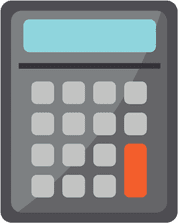In my video blog “What’s the Syndication Investment Process?” I covered the process from the time you’re presented with an investment opportunity until it closes.
But what happens then?
Here’s what you can expect after a deal closes when you invest with most operators (including with our investment company “Nighthawk Equity”).
Regular Updates
Once per month, you should expect to receive an email from your operator with a narrative of what happened in the last 30 days. The narrative will include some of the following information:
- What kind of renovations were done
- What the occupancy and collections were; if it improved, why did it improve; if lower, why was it lower and what is being done about it
- Were the expenses in line with projections?
- Is the business plan on track or if not, why not and what is being done about it.
- If a distribution is being made along with the update, what is that distribution and how does that compare to the projected returns.
- Anything else that is newsworthy about the property and the market in general
We’ve found that this narrative satisfies most passive investors. For those who want more, we can provide more documents such as the Profit and Loss (P&L) statement (including an actual vs. projected analysis), balance sheet, and rent roll.
Once a property has “stabilized” (i.e. it has achieved it targeted net operating income), things get “boring” and most investors stop reading the reports (as long as the distribution checks still keep coming!). That’s why many operators reduce the reporting frequency from monthly to quarterly.
Transparency and Accessibility
If you’re ever interested in any other information that is not provided with the monthly updates, you should be able to ask for additional documentation and receive it promptly.
In addition, your operator should be readily available via email or phone in case you have any questions or concerns.
Distributions
The fun part of passive investing is receiving the cash flow distribution checks!
Often the first distribution is delayed for two quarters after the deal closes to give the operator some time to see how the property performs and deal with any unexpected issues after the closing. A good operator always has enough cash on hand for any emergencies!
Once any issues have been identified and dealt with and the cash flow has become more predictable, the operator can begin paying out distributions.
Many operators send out the distributions quarterly via ACH or mailed check (and some do this monthly).
A good operator will escrow funds from cash flow to fund periodic expenses such as real estate taxes and insurance. This is how the amount of distributions is determined:
Bank Balance
– Escrowed Funds (i.e. Taxes, Insurance, etc)
– Funds for Capital Improvements
– Reserves (typically $250 per unit per year)
– Asset Management Fees to the General Partners
———————————————————————
= Funds Available for Distribution
Once the funds available for distribution are determined, they are distributed per the terms of the Operating Agreement.
Annual Report and Tax Documents
After the books are closed on a year, a good operator will send out an annual report as well as the K-1 tax documents.
The annual report should provide a narrative of how the project performed versus what was projected, and if not, why not and what is being done about it.
It should provide ProForma projections for the new year along with the plan to achieve those projections.
Finally, it should provide the complete P&L and Balance Sheets (or be available upon request).
Even though tax time is always stressful for the operator and their CPAs, a good operator will send out the K-1 no later than the end of March to give investors enough time to file their own taxes.
Conclusion
How an operator communicates with their investors says a lot about them and how they do business. Good operators communicate regularly with their investors, provides additional information when requested, and is always available for questions.
I’d like to think that we at “Nighthawk Equity” are one of those “good” operators, and we’d love to talk with you.
If you’re looking for a strong operator, I invite you to join our Nighthawk Investor Club. You’ll be asked to fill out a short questionnaire and schedule a phone call with our Nighthawk team so that we can get to know each other a bit more. We can then present you with an upcoming opportunity.
While it can take a while to find and trust an operator, once you do, you can continue investing with them for years. At that point, passive investing becomes truly passive and FUN!
